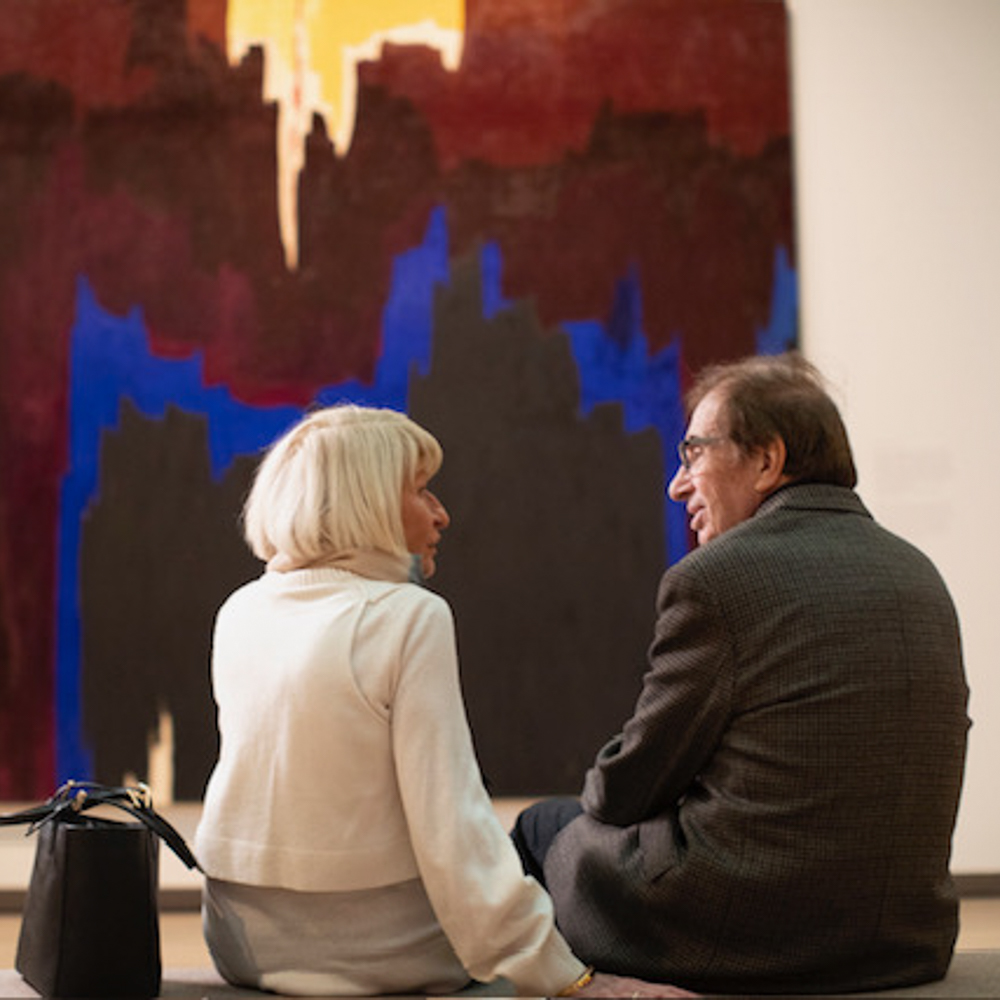It is a sure bet that many Denverites (and Coloradoans) have walked down Bannock and 13th Streets and have never noticed the Well Contemporary Building on the corner. If they did ask about this well-designed building and lovely grounds, the reply would be unexpected. They would be told it is The Clyfford Still Museum, home of the final works of the Artist of the same name. It would not surprise me that their reply would be, “Who is Clyfford Still, anyway? I never heard of him”.
Clyfford Still was one of the founders of the Abstract Impressionist Movement in the United States immediately following World War II. The United States had gone through a dark period during the early 1940s, fighting against the ravages of Naziism in Europe and a partner ally in Japan. After the victories against both, many in this country sought new beginnings. Artists were no different.
Thus, a movement was created that departed from the traditional style of painting where instead of artists painting what they saw, they began to paint what they were feeling. This movement was characterized by swatches of colorful paints, unique shapes, and long and sweeping images- the canvas certainly expressed something new. Still took this one step further. He seldom used a brush but a palette knife instead. He applied paint with the palette knife and created amazingly unique textures that almost look three-dimensional.
Sometimes, artists give a clue to their feelings by bestowing a title, but few, including Clyfford Still, never titled his paintings. He categorized them by number, preferring instead that you, the viewer, interpret it in your unique way and be moved by what you were feeling as you took it all in. Another highlight of Still’s works was the grandiosity in size- it is true, though beautiful, they certainly could never fit into anyone’s living room. He used a roller to paint on some of these massive works.
How did the Clyfford Still Museum come to be? In the Artist’s Will of 1978, he gave 97% of his paintings, books, and papers to a city that would build a museum for only his work. Clyfford had an interesting slant- he felt an artist’s work should not be shown alongside any others so that the full impact of the work could be experienced. Likewise, he felt all artists should be granted this privilege if desired. Denver was chosen over many prominent cities by his widow, who was persuaded to do so by the Mayor of Denver at the time, John Hickenlooper, and her nephew, who resided here. The museum, designed by Western architect Brad Cloepfil, is built entirely in concrete. It is a “mini-museum, “a state-of-the-art construction; walking through it, one cannot help feeling they are in a special place. The money to build it was all raised by private funds at the time, totaling around 18 million dollars. Unlike other museums, many paintings that are not on view can be seen in two large rooms where they are hung. There is also a conservation studio where one can view the paintings being restored, as well as an interactive audio-visual display showing photos from Still’s life and the period in which he lived.
Still was an intensely independent thinker. He believed in the conservative principles which guided his life. Because of this, he had feuds with fellow artists and galleries in New York City whom he felt were not honest in their craft. This resulted in his leaving Manhattan and moving to rural Maryland, where he continued to paint voraciously. Compared to well-known painters Jackson Pollack, Mark Rothko, and others, he chose not to be represented often by galleries. Instead, he sold his own work, which netted him a comfortable lifestyle. However, this kept him out of the public’s eye; thus, he was less well-known to those outside the art world. Still cared very deeply about who owned his paintings, and no matter how much money one had, if he felt you did not appreciate his work, you didn’t get the painting.
I have often heard that people stay away from the museum because they do not like modern art. Please don’t let this stop you from visiting this delightful place. Stand before these large canvases and see if, in fact, you feel any emotion or appreciate the beauty of the colors and a message that might be hiding behind them.
I have been a devotee of Clyfford Still’s paintings after seeing a large retrospective in New York City curated by the artist himself. I feel so fortunate that I came to Denver many years later and became a volunteer guide here. Much of my time there is spent walking around the many paintings I love. So, I hope I have provided you with some information you cannot now say, “Who was Clyfford Still, anyway?” Come on down and see for yourself!
Attribution for thumbnail photo: Clifford Still Museum



